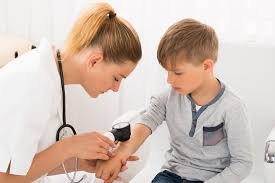Allergies in children are a growing concern, affecting millions worldwide. They can range from mild to severe and impact a child’s quality of life significantly. Early diagnosis and appropriate management are crucial for minimizing symptoms and preventing serious allergic reactions. This guide provides an overview of allergy testing and treatment options for children, helping parents navigate the path to effective allergy management.
Understanding Allergies in Children
Allergies occur when the immune system mistakenly identifies a harmless substance as a threat and overreacts to it. Common allergens include pollen, pet dander, certain foods, insect stings, and mold. Allergies can manifest in various ways, including:
- Skin Reactions: Hives, eczema, or itching.
- Respiratory Symptoms: Sneezing, runny nose, coughing, or wheezing.
- Digestive Issues: Nausea, vomiting, diarrhea, or abdominal pain.
- Anaphylaxis: A severe, potentially life-threatening reaction that includes symptoms like difficulty breathing, swelling, and a rapid drop in blood pressure.
Allergy Testing for Kids
Accurate diagnosis is the first step in managing allergies effectively. Several types of allergy tests can help identify specific allergens triggering your child’s symptoms:
- Skin Prick Test:
- Procedure: Small amounts of potential allergens are applied to the skin’s surface using a tiny needle. The skin is then observed for a reaction, such as redness or swelling.
- Pros: Provides quick results and can test for multiple allergens simultaneously.
- Cons: May cause minor discomfort and is not suitable for children with severe eczema or those on certain medications.
- Blood Test:
- Procedure: A blood sample is taken and analyzed for specific antibodies (IgE) produced in response to allergens.
- Pros: Useful for children who cannot undergo skin testing and can be combined with other diagnostic tests.
- Cons: Results take longer to obtain and may be more expensive than skin tests.
- Patch Test:
- Procedure: Allergens are applied to a patch that is then placed on the skin for 48 hours. The skin is examined for reactions after the patch is removed.
- Pros: Effective for diagnosing contact dermatitis.
- Cons: Limited to detecting allergies to substances that come into contact with the skin.
- Oral Food Challenge:
- Procedure: Under medical supervision, your child is given small amounts of the suspected allergen to eat, with close monitoring for any reactions.
- Pros: The gold standard for diagnosing food allergies.
- Cons: Requires careful supervision and can be time-consuming.
Treatment Options for Kids with Allergies
Once allergens are identified, treatment aims to minimize symptoms and avoid triggering substances. Treatment options include:
- Avoidance:
- Strategy: The most effective way to manage allergies is to avoid the identified allergens.
- Implementation: This might involve dietary changes, creating allergen-free zones in the home, or using air purifiers to reduce airborne allergens.
- Medications:
- Antihistamines: These medications block the action of histamines, reducing symptoms like sneezing, itching, and runny nose.
- Decongestants: Help relieve nasal congestion but are generally used for short-term relief.
- Corticosteroids: Nasal sprays or oral medications that reduce inflammation and are effective for more severe symptoms.
- Epinephrine: For severe allergic reactions (anaphylaxis), an epinephrine auto-injector is essential. It is crucial for children with known severe allergies.
- Immunotherapy:
- Allergy Shots: Regular injections of small amounts of allergens to build tolerance over time.
- Sublingual Immunotherapy: Allergy tablets or drops placed under the tongue to desensitize the immune system to specific allergens.
- Pros: Can provide long-term relief and reduce the need for medications.
- Cons: Requires a commitment to a long-term treatment plan and may have initial side effects.
- Emergency Plan:
- Strategy: Develop an action plan with your child’s allergist to manage severe allergic reactions.
- Components: Include instructions for administering epinephrine, recognizing signs of anaphylaxis, and seeking emergency medical help.
Practical Tips for Managing Allergies in Kids
- Education:
- Educate your child about their allergies and how to avoid triggers. Ensure they understand how to communicate their symptoms and the importance of not sharing foods or items that could cause an allergic reaction.
- Allergy-Friendly Environment:
- Create a safe environment by keeping allergens out of the home. Use hypoallergenic bedding, regularly clean surfaces, and avoid using strong fragrances or harsh chemicals.
- Regular Check-Ups:
- Schedule regular visits with your child’s allergist to monitor their condition and adjust treatment as needed.
- Emergency Preparedness:
- Ensure that your child carries an epinephrine auto-injector and that caregivers, teachers, and friends are aware of their allergies and how to use it if necessary.
- Support Networks:
- Connect with support groups or online communities for parents of children with allergies. Sharing experiences and advice can provide valuable support and resources.
Conclusion
Managing allergies in children involves accurate diagnosis, effective treatment, and ongoing vigilance. By understanding the types of allergy tests available, exploring various treatment options, and implementing practical strategies to manage allergies, parents can help their children lead healthier, more comfortable lives. Early intervention and proactive management are key to minimizing symptoms and ensuring a better quality of life for children with allergies
